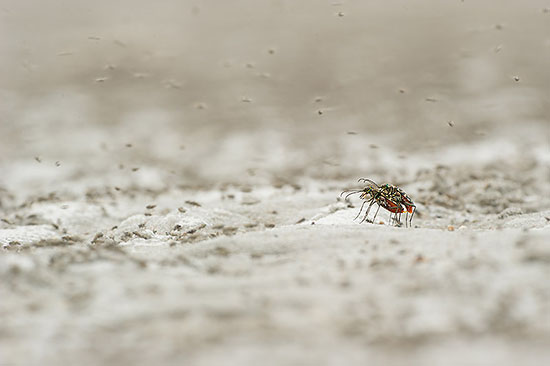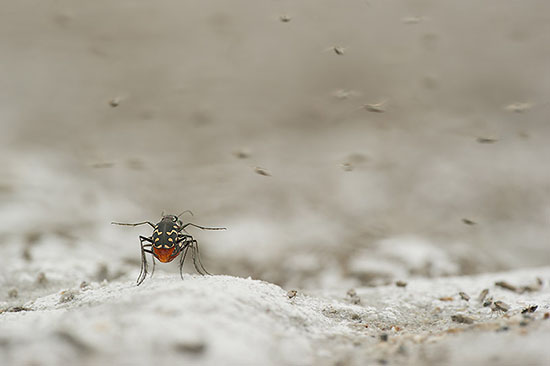Salt Lake is populated during the summer by billions of brine flies, which attracts a lot of birds and insects predating on them. The Brine flies are also the bulk food of hundreds of thousands of Orb Weaver Spiders, Neoscona arabesca. In July every single bush, large stone, stick or pole along the lake is covered in the webs of this species.
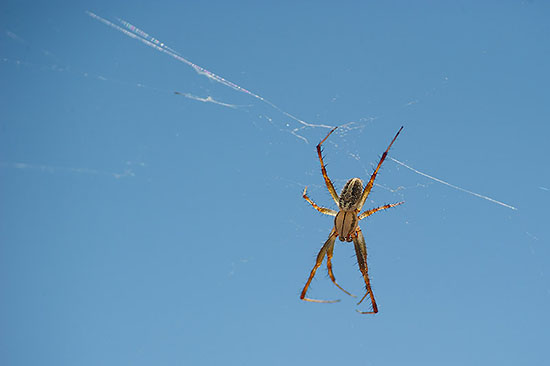
I immediately knew the circumstances for Tiger Beetles were extremely favourable: wet sandy and muddy shores and plenty of food, which is a severe euphemism… The image under illustrates perfectly what I mean.
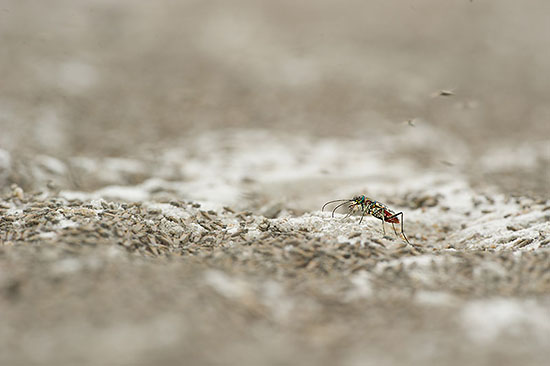
After a little searching I found a spot, where Westsalts Tiger Beetles, Cicindela hemorrhagica were really numerous. I am always surprised how these often flashy coloured beetles are still so easily overlooked: they often fly of quickly when you approach them at a normal slow walk speed, and they are often gone even before you’ve seen them flying off. When seen from above and from a distance, they look pretty dull dark coloured. With the pale markings which gives them a patchy appearance, they doesn’t contrast at all with the surrounding of the wet sand, some pebbles, shells and debris along the shore. Moreover at every step one takes along the shore a few thousand brine flies fly up, so detecting a noticeable larger insect flying off isn’t that easy… Under here a first image from the species, fiercely standing up and perfectly dressed to kill. The next image shows the beautiful pattern on the shields.
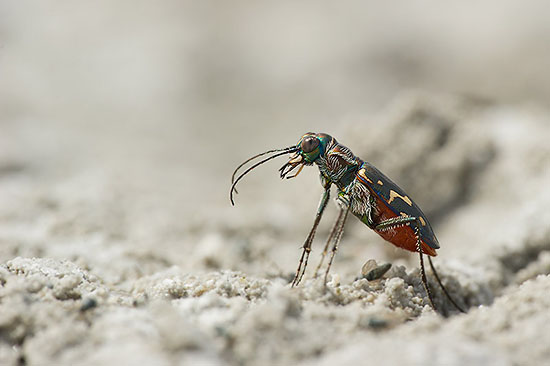
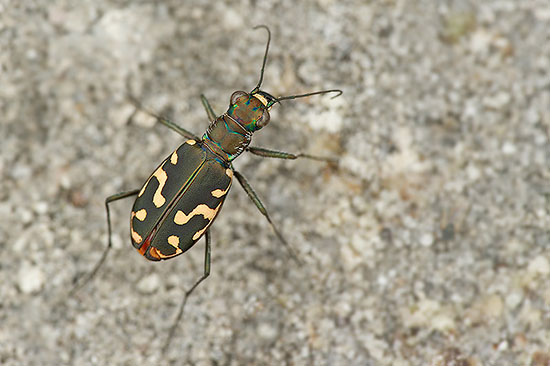
Extremely tough circumstances
I have been working since several years on a series of Ground beetles and this was a unique opportunity for me to get good images from the tiger beetles. But on the other hand, I never encountered such tough conditions to take good pictures in my entire life: it was more than 40 degrees Celsius in the shadow and there was no shadow… Moreover the Westsalts Tiger Beetles were only present in the stinking brackish mud on the edge of the lake. Tiger beetles are incredibly fast and wary, and the higher the temperatures are, the more wary they become. When approaching them by walking, they fly away when you make the slightest movement at a distance closer than three metres. My technique consisted in lying flat on my belly, and avoid making shadow which would cause the beetle flying away. I very slowly crawled towards a beetle till a distance of about one meter, avoiding to make any sudden movements, and would then wait till a beetle would walk towards me. In the beginning I had to control my natural reflex to throw up, because of the nauseating smell of the mud. When lying quiet for a while I was soon covered by thousands of brine flies, who seemed to have developed a particular interest in my facial orifices. Sometimes they were in my eyes, nostrils, mouth and ears…
Under here images of the Tiger Beetles stalking their prey, and one beetle eating a Brine Fly.
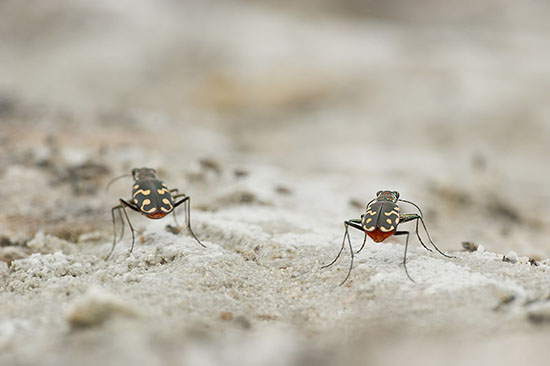
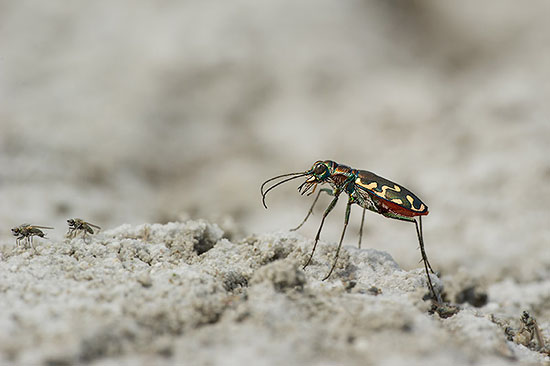
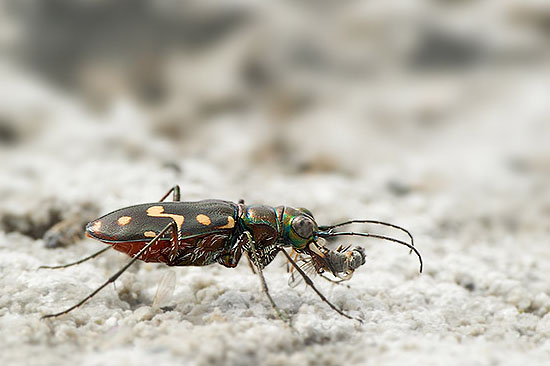
Time to start worrying…
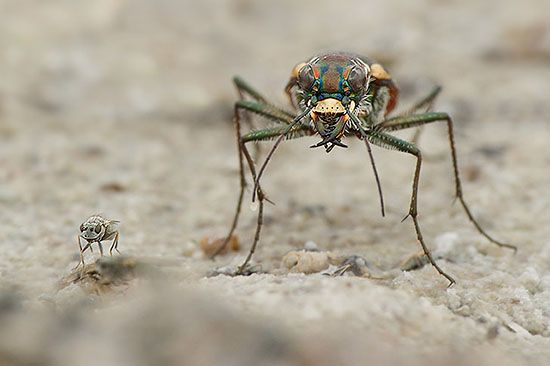
Lord of the Flies, dressed like a fierce warrior...
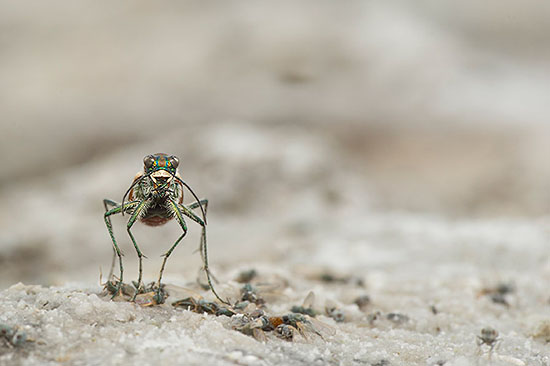
The next three images show mating Westsalts Tiger Beetles.
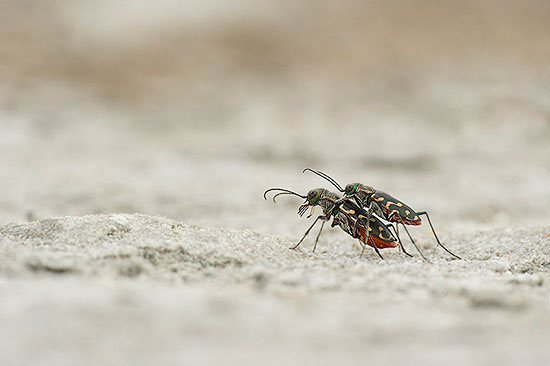
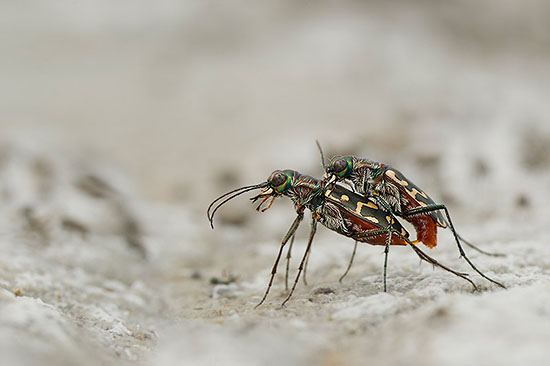
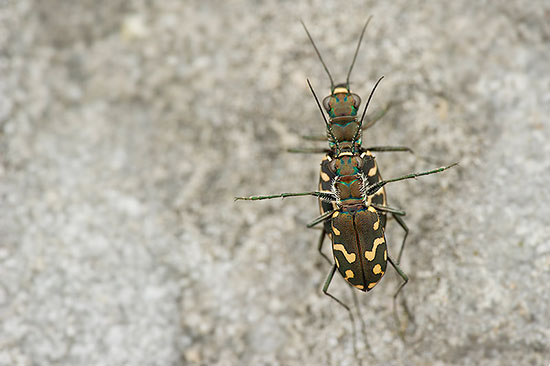
I spent about five full hours laying in the smelly mud, but in the end I got rewarded with the pictures I was looking for: mating tiger beetles surrounded by thousands of flies. Gulls were also predating constantly on the flies by flying over them with their bill wide open. This caused entire clouds of flies on the move. This was the moment I made had waited for and I hoped the beetles would not fly away as fast as the flies did. I finally got an image of mating beetles, shot at eye level and surrounded by a cloud of brine flies. Under here my two favourite images. However the atmosphere is better revealed when looking at the images on a larger format. For some larger scale images, please take a look at my stock, by clicking here and here.
